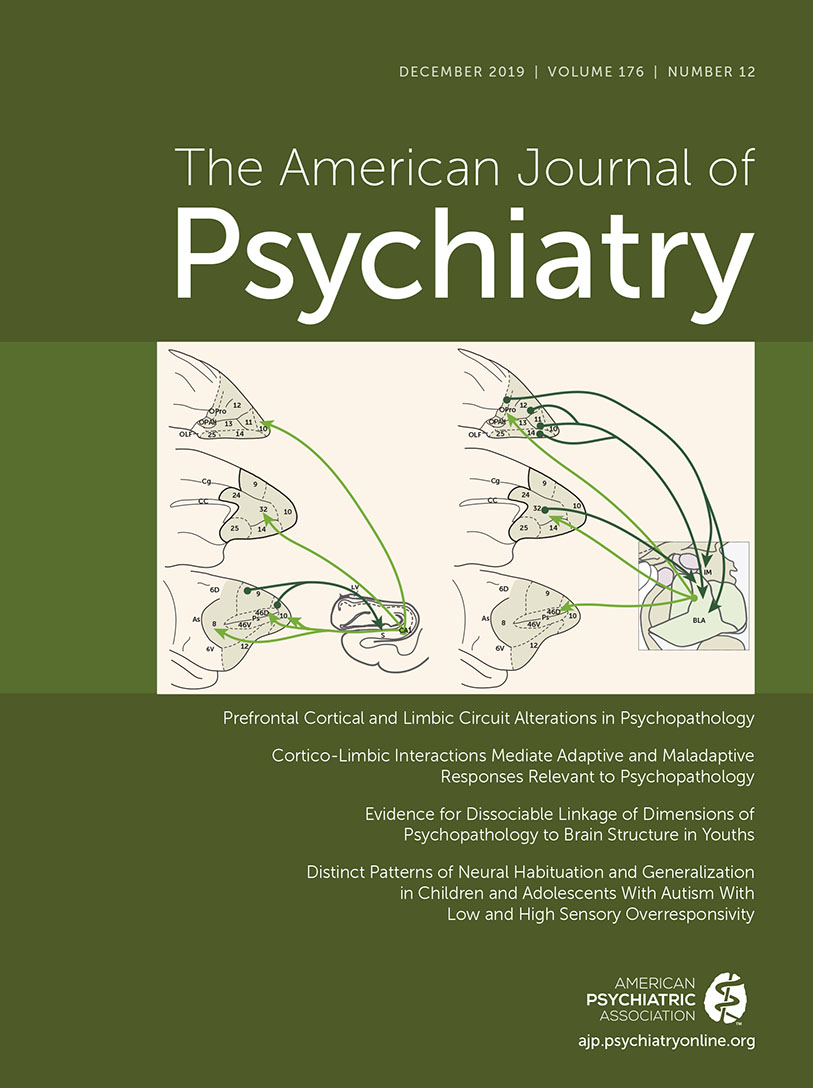The Future of Dementia Biomarkers Needs Better Neuropsychology
to the editor: In their publication in the July 2019 issue of the Journal, Licher et al. (1) successfully predict the risk for all-cause dementia in a population of community-dwelling adults. Importantly, inclusion of cognitive performance along with genetic and neural information significantly improved prediction, suggesting that these biomarkers are highly informative in the predementia population. The integration of clinical, genomic, and neural information with cognitive performance represents the power of a precision medicine framework (2, 3).
We strongly support the statement in the accompanying editorial that “disease-specific biomarkers and prediction algorithms are urgently needed to identify people at specific risk for the several neurodegenerative diseases” (4), and we agree that Licher et al. offer one such algorithm. However, while Licher et al. include state-of-the-art imaging methods and statistical analyses, the measures of cognitive abilities, standardly employed by the field, have not changed for several decades. Many such measures have limited norms, are susceptible to retest effects, and require trained clinicians, thus restricting how many older adults can be assessed as well as the frequency with which they can be assessed. For Licher et al.’s models to affect global health care, different cognitive operationalization is warranted.
Implementing the following changes would greatly improve the applicability of such predictive models and increase their clinical dissemination. First, adopting computerized cognitive measures would maximize standardized administration and scoring; enable alternate versions, minimizing learning effects that are innate to repeated testing; and include additional measures, such as speed of detection or processing, that are highly informative (5). Importantly, such tests can be administered by various providers, thereby reducing costs and increasing patient accessibility. Second, embracing an open science approach would increase emphasis on sharing deidentified electronic medical records, brain imaging data, and cognitive testing materials and scores to create large data sets enabling data-driven, cross-diagnostic analysis to improve patient stratification. Open access to tests and their results would permit revalidating and updating existing test norms to include such relevant factors as cultural background and socioeconomic status.
We strongly believe such predictive models hold great promise for the treatment of neurodegenerative diseases. Combining affordable computerized testing and an open science framework will improve the predictive value of such models and their translation into clinical settings. Finally, such widespread utilization would assist in revealing etiology-specific deficits (4).
1 : Development and validation of a dementia risk prediction model in the general population: an analysis of three longitudinal studies. Am J Psychiatry 2019; 176:543–551Link, Google Scholar
2 : Associations of amyloid, tau, and neurodegeneration biomarker profiles with rates of memory decline among individuals without dementia. JAMA 2019; 321:2316–2325Crossref, Medline, Google Scholar
3 : Putting the new Alzheimer disease amyloid, tau, neurodegeneration (AT[N]) diagnostic system to the test (editorial). JAMA 2019; 321:2289–2291Crossref, Medline, Google Scholar
4 : Predicting risk for dementia: is it ready for the clinic? (editorial). Am J Psychiatry 2019; 176:501–502Link, Google Scholar
5 : Development of VM-REACT: Verbal Memory REcAll Computerized Test. J Psychiatr Res 2019; 114:170–177Crossref, Medline, Google Scholar



